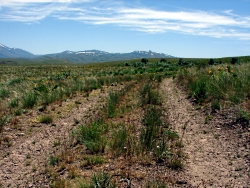
made of ice crystals.
Courtesy & © Jim Cane, Photographer
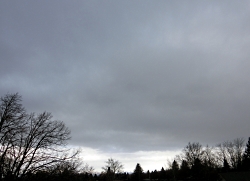 A dark monotonous low deck
A dark monotonous low deck
of stratus clouds.
Courtesy & © Jim Cane, Photographer
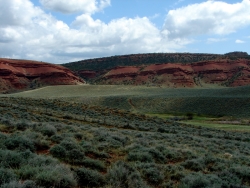 Fair-weather cumulus clouds
Fair-weather cumulus clouds
with flat bottoms and puffy tops.
Courtesy & © Jim Cane, Photographer
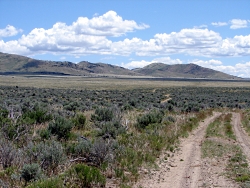 Fair-weather cumulus clouds
Fair-weather cumulus clouds
with flat bottoms and puffy tops.
Courtesy & © Jim Cane, Photographer
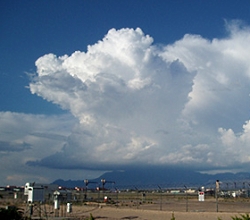 Cumulonimbus
Cumulonimbus
A dense cloud that grows upward, looks like a cauliflower, anvil, or tower, and usually has lightning, thunder, and rain.
Courtesy NOAA
Who has not indulged in the idle pastime of watching puffy white clouds pass overhead, naming their shapes as they form? Of course, such whimsical names do not serve comparative description and understanding. For this, a lexicon of clouds is needed. Our formal cloud classification system traces back to 1803, when an Englishman, Luke Howard, published “An essay on the modifications of clouds”. Luke Howard owned a profitable pharmaceutical company, which funded his gentlemanly meteorological pursuits. Mr. Howard wisely chose a Latin cloud vocabulary to name and illustrate three fundamental cloud types.
The highest flying clouds he named cirrus, meaning curl or tuft, as of hair. These wispy clouds often resemble fibers; one form is the aptly named horse-tail cirrus. Composed of ice crystals, cirrus clouds form at around 30,000 feet, about the cruising altitude of passenger jets. Wispy cirrus clouds often portend a stormy Pacific low-pressure system en route to Utah.
Howard dubbed a type of lower elevation cloud cumulus, meaning mass or heap. These grow from mere puffs to big flat-bottomed clouds with white cauliflower tops. For sheer meteorological beauty, nothing beats legions of fair weather cumulus scudding across a bluebird sky atop a montane backdrop.
The lowest cloud form is stratus. Forming below 8000 feet, they appear as an extensive deck of unbroken gray. Stratus clouds often bring Utah’s winter snowstorms and spring rains. Nimbostratus are responsible for Seattle and Portland’s endless winter drizzle. In contrast, our Utah summer rains fall from towering cumulonimbus thunder heads. These ominous clouds are powered by hot summer updrafts and the steamy humidity that flows northward with the North American monsoon.
Luke Howard’s cloud-naming convention includes 10 principal types in all which easily lend themselves to naming combinations. You can now envision the height and appearance of cirrocumulus clouds, for instance. Cirrus, cumulus, stratus, nimbus, the cloud lexicon of amateur meteorologist Luke Howard has endured for over 200 years. Pictures of these cloud types with a link to the pages of Howard’s original published treatise can be found at our Wild About Utah website.
This is Linda Kervin for Bridgerland Audubon Society.
Credits:
Images: Courtesy NOAA and
Courtesy & Copyright Jim Cane
Text: Jim Cane
Additional Reading:
Luke Howard. 1803. “Essay on the modifications of clouds by “3rd ed. Published 1865 by John Churchill & Sons in London .
https://archive.org/details/essayonmodifica00howagoog and
https://books.google.com/books?id=7BbPAAAAMAAJ&printsec=frontcover#v=onepage&q&f=false
Riehl, Herbert. 1978. “Introduction to the Atmosphere.” McGraw-Hill, NY.
https://www.amazon.com/Introduction-Atmosphere-Herbert-Riehl/dp/0070526567
International Cloud Atlas, World Meteorological Organization,https://cloudatlas.wmo.int/home.html
